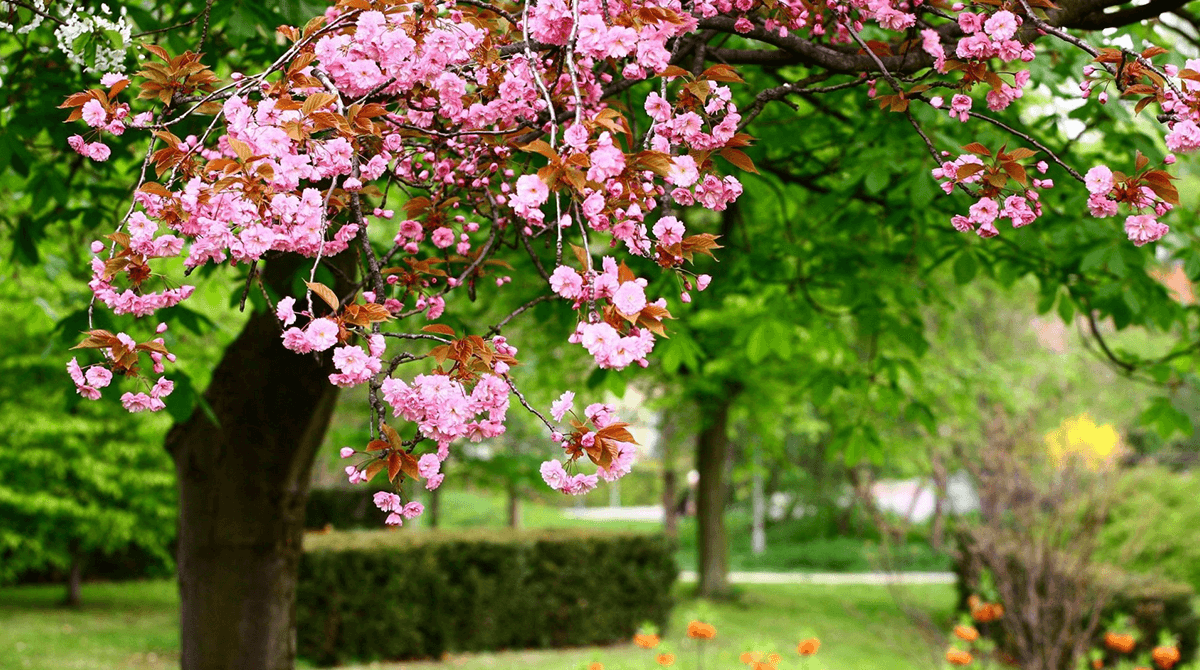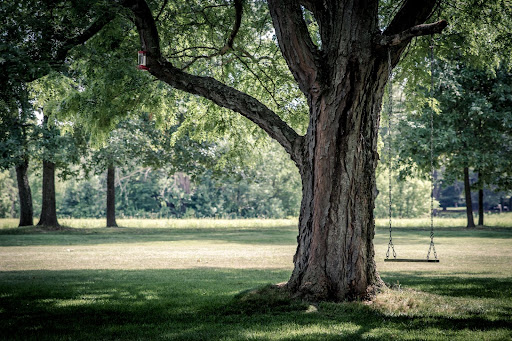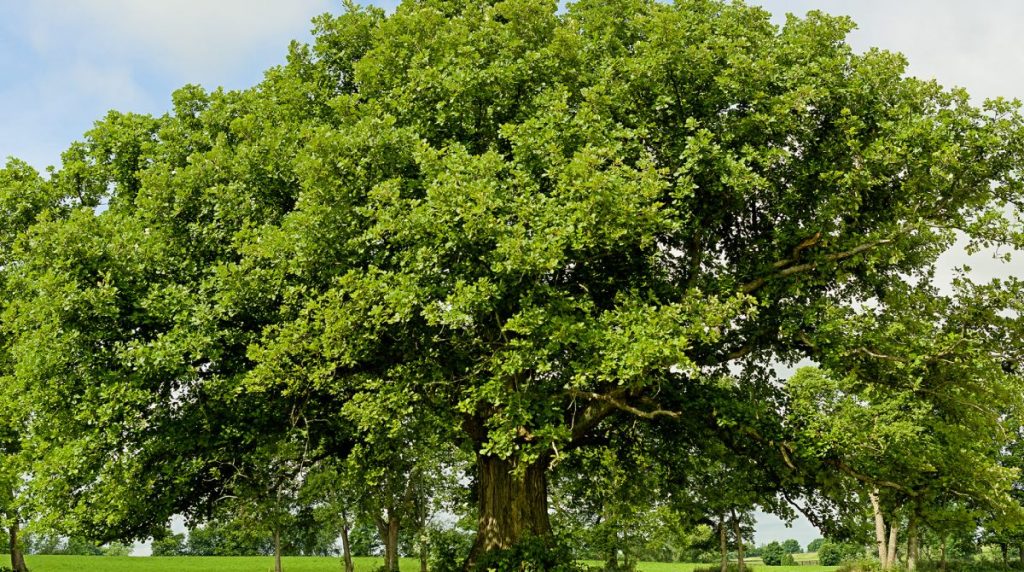
Date June 03, 2021
Category
Spring is a beautiful and exciting time. The days get longer and warmer. Spring flowers come into full bloom, attracting bees and butterflies to gather around them. For trees, it’s time to shine! They burst with new life, showing off a fresh set of bright green leaves. Some trees even produce a full batch of colorful blooms this time of year, adding splashes of color to our roadways, shopping centers, and backyards. If you want to help your North Texas trees to thrive this year, here are some spring tree care tips in three phases.
Phase 1: Early Spring
In early spring, before waving winter goodbye for the last time, there are some things you can do to prepare your trees for the growing season and the upcoming year.
- Inspect trees for winter damage: Sometimes, you have to wait until trees leaf out to understand the full extent of winter damage, but there are certain signs you can look for before that. First, look for broken branches. After a winter storm, you can expect to find debris on the ground, but if it looks like more than half the tree is damaged, your tree might be in serious trouble. Second, look for missing bark. Don’t be too alarmed about small patches of missing bark. However, large patches of missing bark, especially if it encircles the tree, should be cause for concern. Finally, it would help if you also looked for splits or cracks in the trunk. Sometimes a tree with a damaged trunk can be saved unless the splits or cracks are severe. Call TreeNewal if you see any of these concerns. Our tree surgeons and tree doctors can help.
- Prune dead or diseased branches: In North Texas, you should generally prune your trees before temperatures drop in the fall or before the trees leaf out in the spring. This protects your trees from pests and diseases that prey on vulnerable trees with open wounds. However, the removal of dead or diseased branches can be done at any time of the year and should be a part of your yearly tree care routine to maintain the health of your trees. However, keep in mind that removing large branches, especially if they’ve been damaged during the winter, can be extremely dangerous and should be done by a professional who has the tools and knowledge to remove them safely.
Phase 2: Pre-bloom
- Remove fallen leaves, fallen branches, and other debris: Certain pests and diseases can overwinter in fallen debris and then reinfect your tree in the spring, so before your trees break bud in the spring, you should remove all the fallen leaves, branches, and other debris from around them and safely dispose of it.
- Soil conditioning: One of the best proactive measures you can take with your trees is soil conditioning. Trees are living organisms, and, like all living things, they need a healthy diet to thrive. TreeNewal has a maintenance program that can assist you in this area. An ISA Certified Arborist can visit your property to assess your trees and soil and determine a customized soil conditioning solution for you. Trees soak up nutrients from the soil through their roots, so ensuring they have a healthy root system is also key to their success. We use a special soil health blend that we highly recommend to all our customers. It’s a natural plant growth stimulator designed to boost your tree’s ability to absorb nutrients and develop a deeper, stronger root system, bark, and canopy. With this blend, your trees will be significantly better prepared to handle stressors like hot or freezing temperatures, drought, disease, and pests.
- Planting new trees: In North Texas, the best time to plant new trees or shrubs is from late fall through early spring. Planting trees before bud break gives them time to establish themselves in their new environment before expending energy to leaf out. You can still plant trees after they’ve leafed out, but try to do it as early in the spring as possible, while temperatures are still relatively cool and the soil is still moist. The main objective is to give your trees and shrubs as much time as possible to become established before the sweltering temperatures of summer hit full force. That’s going to give your tree a much better chance of surviving and thriving in its first year. Plan to water your new tree or shrub a lot throughout the first three years of its life. Using proper soil conditioning and mulching techniques will also give your new tree a health boost.
Phase 3: Full bloom
- Mulching: First comes spring, then comes summer — and with it hot, dry weather that can damage your tree’s roots. To protect your trees and shrubs from damage, you should ensure they have a fresh layer of mulch before summer weather strikes. Mulch acts as a protective layer over your tree’s roots, keeping the soil moist and cool. Just make sure to use proper mulching techniques. You don’t want to over-mulch as that can cause a host of other issues. Put down a layer of mulch about two to four inches thick and keep the mulch a few inches away from the tree’s trunk.
TreeNewal can help!
If you have questions about spring tree care and you’ve been Googling “tree doctors near me,” you’ve come to the right place! Our ISA Certified Arborists are available to visit your property and assess your tree’s health. TreeNewal is a certified arborist tree service with certified arborists on staff and a team of highly qualified tree care experts. If you need professional tree care, our tree doctors in Dallas are the best in the business. They can make knowledgeable recommendations for optimizing your tree’s health. We care about tree health care at all stages of the tree life cycle. We are experts on both young and mature trees, and we offer a variety of expert tree care services, such as tree planting, tree trimming, tree pruning, pest and disease control, root aeration, and tree removal. For more information, go to our website at treenewal.com. To set up an appointment, call us at tel:(817) 592-6846.
To learn more about the Spring Tree Care Checklist: Prepare in 3 Phases, call our Argyle and Southlake-based teams
at tel:(817) 592-6846 or send us a message.
We’re a little different than the average tree services company.
Learn more about TreeNewal’s ISA Certified Arborists!
Our Dallas/Fort Worth-based tree doctors can explain how sustainable tree care services add more value to your bottom line.
Healthy trees, healthy lives.







